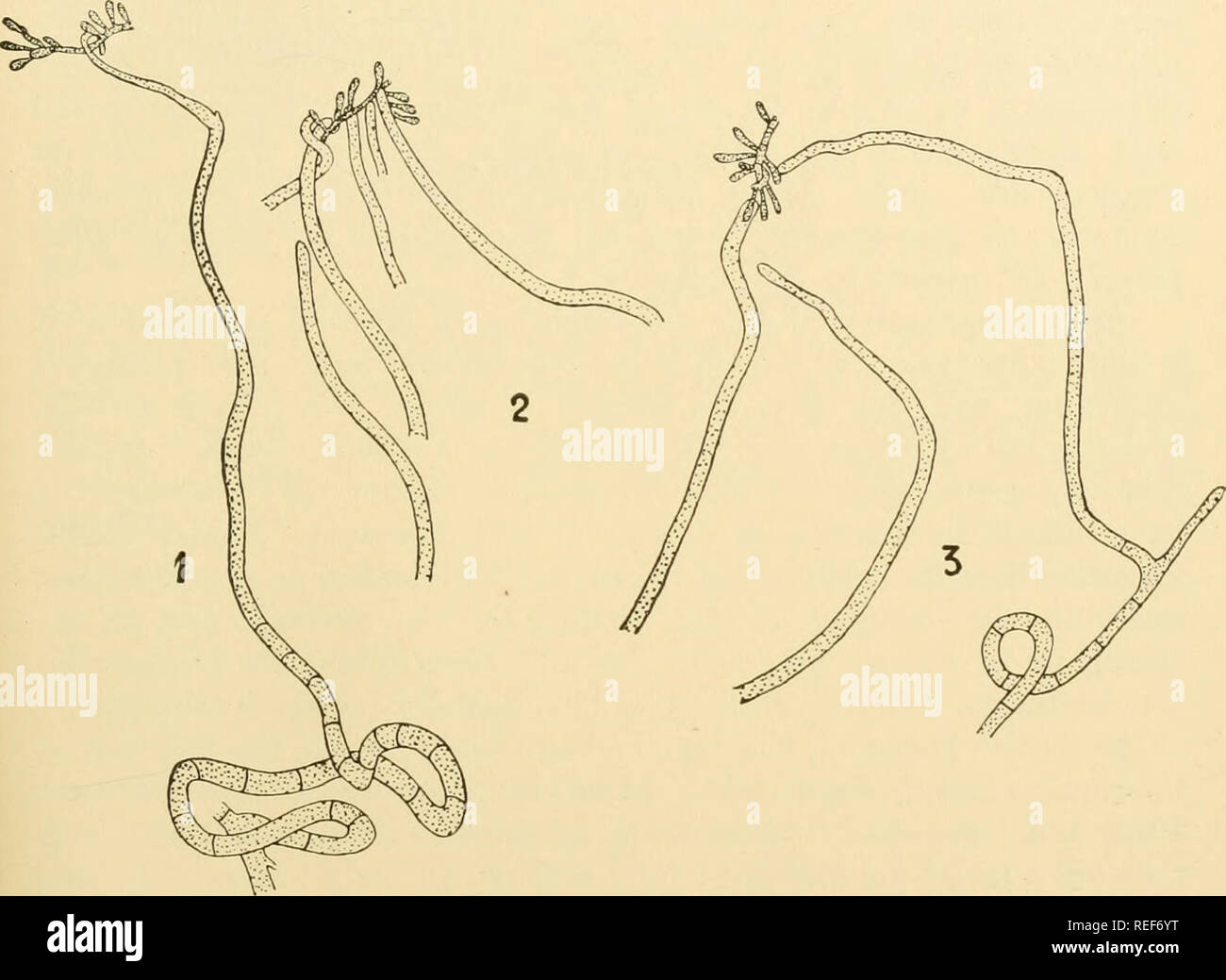. Comparative morphology of Fungi. Fungi. PEZIZALES 351 migrates to the ascogonium, which subsequently develops ascogenous hyphae (Baur, 1898). In Collema pulposum or a closely related species, a different behavior has been determined. Here the conidia, as in Ascobolus carbonarius, do not fall away but remain on the conidiophores. Hence the trichogyne grows, as in Ascobolus carbonarius, over the thallus surface toward the conidiophores and unites with them (Fig. 236). In these lichens the more migration of the conidial nucleus into the trichogyne has been demon- strated; the nuclear relationsh

Image details
Contributor:
The Book Worm / Alamy Stock PhotoImage ID:
REF6YTFile size:
7.1 MB (168.2 KB Compressed download)Releases:
Model - no | Property - noDo I need a release?Dimensions:
1849 x 1351 px | 31.3 x 22.9 cm | 12.3 x 9 inches | 150dpiMore information:
This image is a public domain image, which means either that copyright has expired in the image or the copyright holder has waived their copyright. Alamy charges you a fee for access to the high resolution copy of the image.
This image could have imperfections as it’s either historical or reportage.
. Comparative morphology of Fungi. Fungi. PEZIZALES 351 migrates to the ascogonium, which subsequently develops ascogenous hyphae (Baur, 1898). In Collema pulposum or a closely related species, a different behavior has been determined. Here the conidia, as in Ascobolus carbonarius, do not fall away but remain on the conidiophores. Hence the trichogyne grows, as in Ascobolus carbonarius, over the thallus surface toward the conidiophores and unites with them (Fig. 236). In these lichens the more migration of the conidial nucleus into the trichogyne has been demon- strated; the nuclear relationships in the ascogonium are so complicated, . Fig. 236.-—Collema pulpostim. Trichogyne growing toward conidiophore. ( X 345; after Bachman, 1912.) however, that their further fate cannot be followed (Bachman, 1912, 1913). Because of this property of copulation with trichogynes, the conidia of lichens have been considered specialized male sexual cells and called spermatia and the pycnia correspondingly have been called spermagonia. Moeller (1887, 1888) and Istvanffi (1895) working with impure cultures have denied the assumption of this specialization, as the pycnidiospores may develop in culture to mycelia, as normal imperfect forms. More probable is the interpretation which already has been brought forth in connection with Ascobolus carbonarius; that it is a question of ordinary. Please note that these images are extracted from scanned page images that may have been digitally enhanced for readability - coloration and appearance of these illustrations may not perfectly resemble the original work.. Gäumann, Ernst Albert, 1893-1963; Dodge, Carroll William, 1895-. New York [etc. ] McGraw-Hill Book Company, Inc.